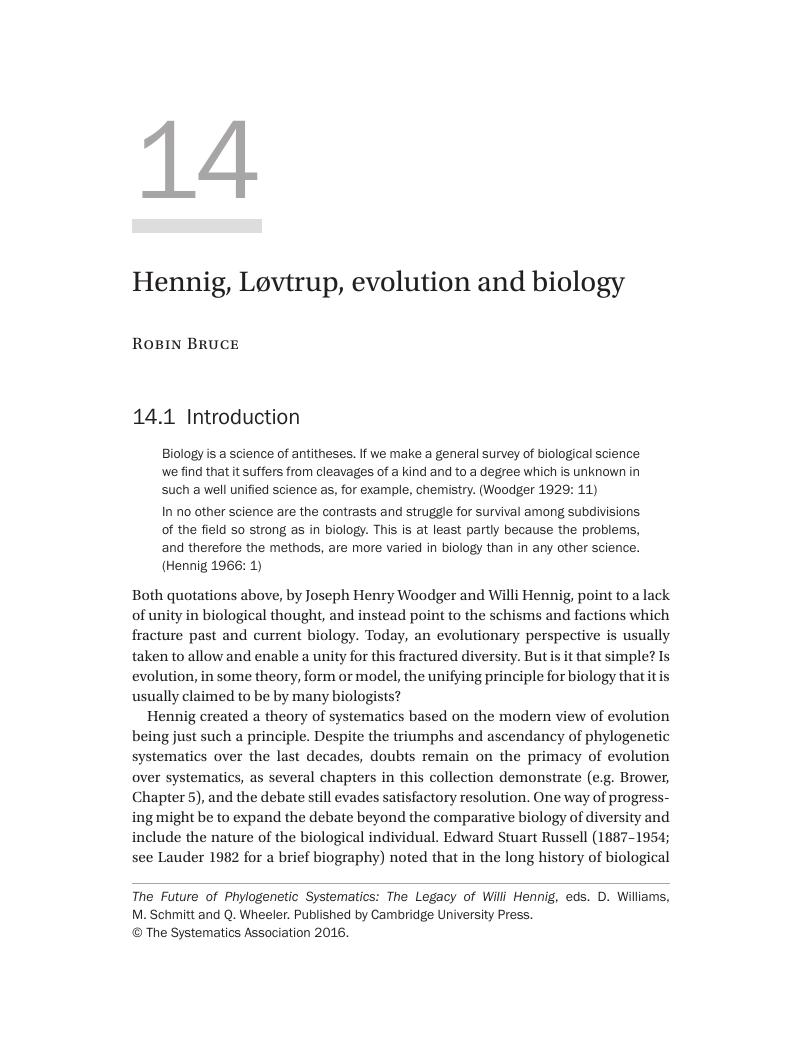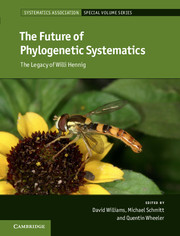Book contents
- The Future of Phylogenetic Systematics: The Legacy of Willi Hennig
- The Systematics Association
- The Future of Phylogenetic Systematics
- Copyright page
- Contents
- Contributors
- Foreword
- Introduction
- 1 Mission impossible: the childhood and youth of Willi Hennig
- 2 Willi Hennig: a shy man behind a scientific revolution
- 3 Willi Hennig’s legacy in the Nordic countries
- 4 Hennigian systematics in France, a historical approach with glimpses of sociology
- 5 Are we all cladists?
- 6 How much of Hennig is in present day cladistics?
- 7 The evolution of Willi Hennig’s phylogenetic considerations
- 8 What we all learned from Hennig
- 9 Semaphoronts: the elements of biological systematics
- 10 Why should cladograms be dichotomous?
- 11 Hennig’s auxiliary principle and reciprocal illumination revisited
- 12 Dispersalism and neodispersalism
- 13 Molecular data in systematics: a promise fulfilled, a future beckoning
- 14 Hennig, Løvtrup, evolution and biology
- 15 Willi Hennig as philosopher
- 16 Hennig and hierarchies
- 17 Chain, tree, and network: the development of phylogenetic systematics in the context of genealogical visualization and information graphics
- 18 The relational view of phylogenetic hypotheses and what it tells us on the phylogeny/classification relation problem
- 19 This struggle for survival: systematic biology and institutional leadership
- Index
- References
14 - Hennig, Løvtrup, evolution and biology
Published online by Cambridge University Press: 05 July 2016
- The Future of Phylogenetic Systematics: The Legacy of Willi Hennig
- The Systematics Association
- The Future of Phylogenetic Systematics
- Copyright page
- Contents
- Contributors
- Foreword
- Introduction
- 1 Mission impossible: the childhood and youth of Willi Hennig
- 2 Willi Hennig: a shy man behind a scientific revolution
- 3 Willi Hennig’s legacy in the Nordic countries
- 4 Hennigian systematics in France, a historical approach with glimpses of sociology
- 5 Are we all cladists?
- 6 How much of Hennig is in present day cladistics?
- 7 The evolution of Willi Hennig’s phylogenetic considerations
- 8 What we all learned from Hennig
- 9 Semaphoronts: the elements of biological systematics
- 10 Why should cladograms be dichotomous?
- 11 Hennig’s auxiliary principle and reciprocal illumination revisited
- 12 Dispersalism and neodispersalism
- 13 Molecular data in systematics: a promise fulfilled, a future beckoning
- 14 Hennig, Løvtrup, evolution and biology
- 15 Willi Hennig as philosopher
- 16 Hennig and hierarchies
- 17 Chain, tree, and network: the development of phylogenetic systematics in the context of genealogical visualization and information graphics
- 18 The relational view of phylogenetic hypotheses and what it tells us on the phylogeny/classification relation problem
- 19 This struggle for survival: systematic biology and institutional leadership
- Index
- References
Summary

- Type
- Chapter
- Information
- The Future of Phylogenetic SystematicsThe Legacy of Willi Hennig, pp. 344 - 355Publisher: Cambridge University PressPrint publication year: 2016



